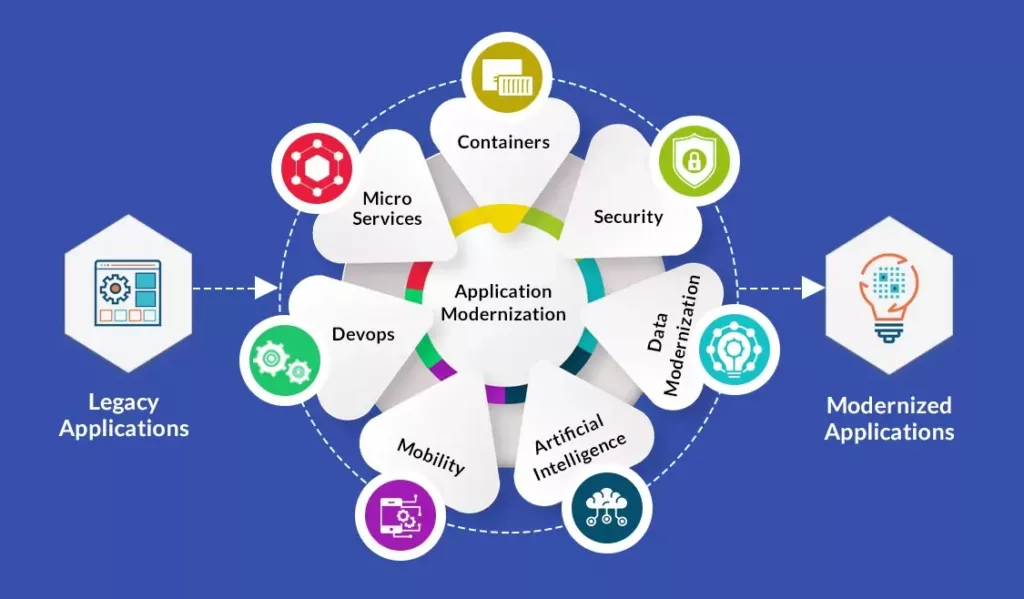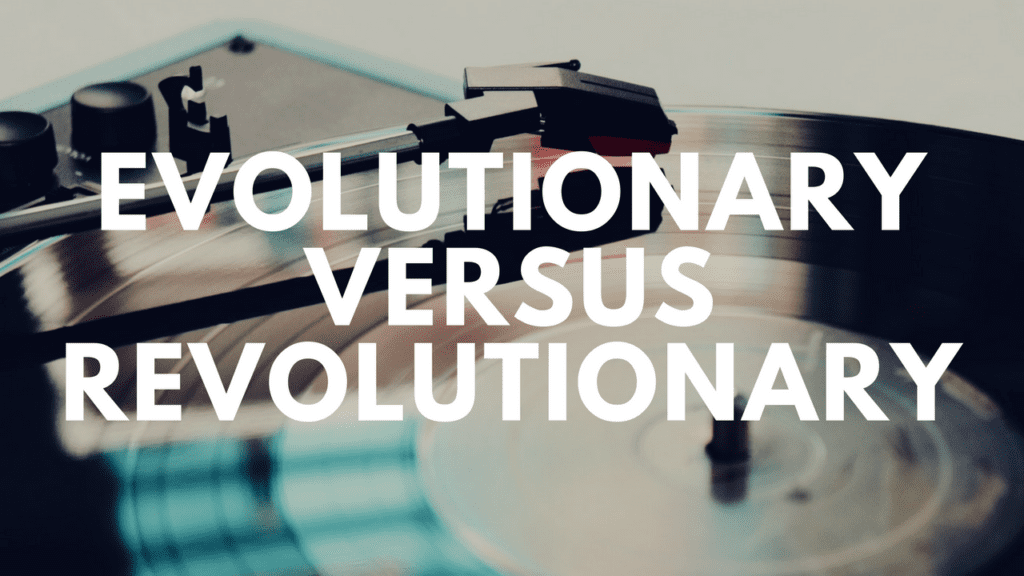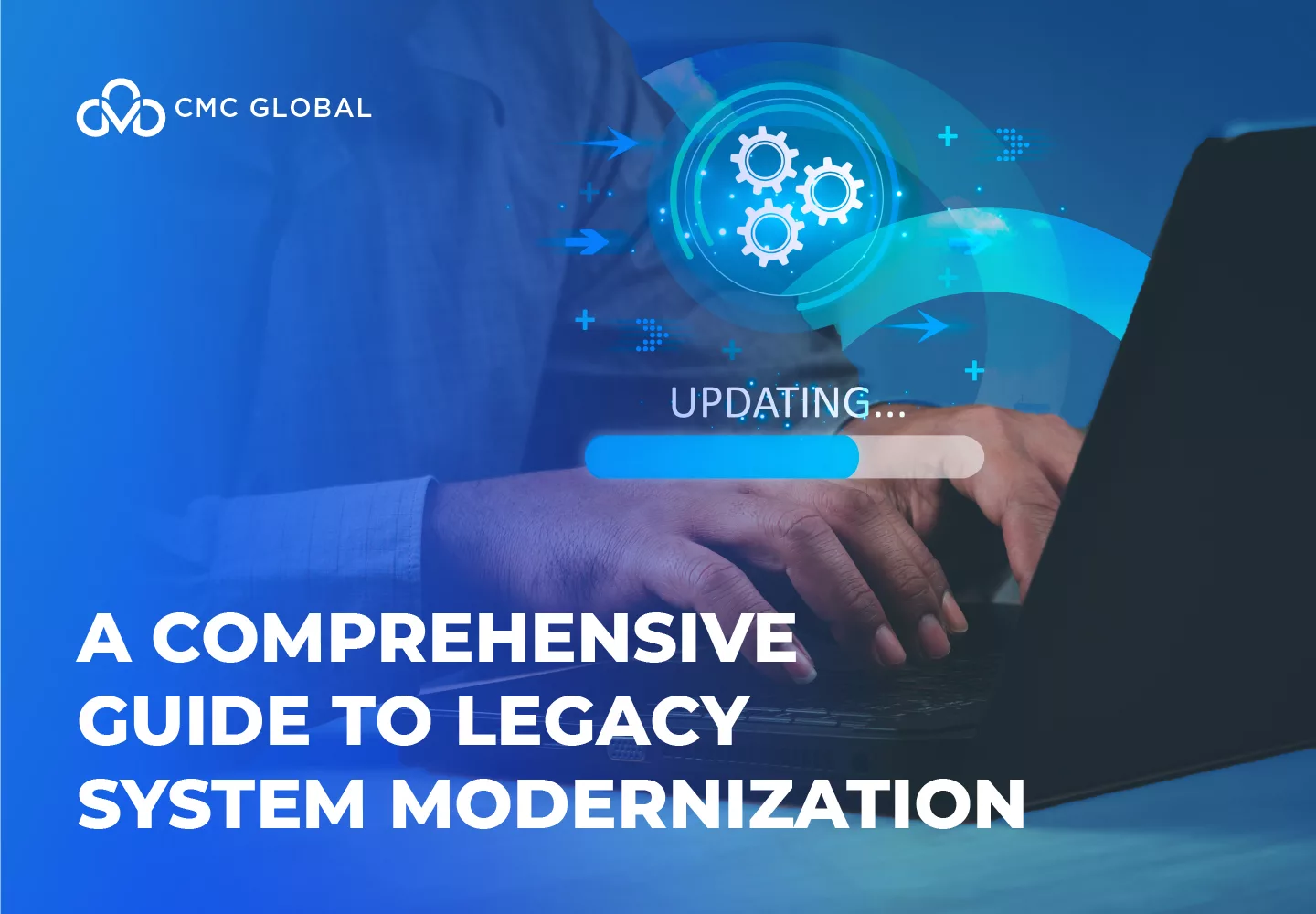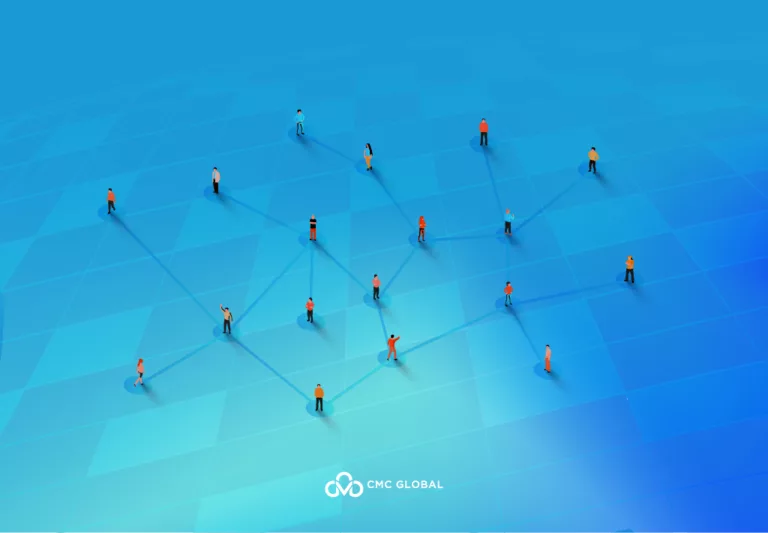As organizations strive to remain competitive in the digital era, the significance of legacy modernization continues to grow. Legacy systems, having endured for an extended period, might now appear outdated or inefficient in comparison to contemporary technology. The act of modernizing these legacy systems holds the potential to streamline processes, elevate the customer experience, and unlock fresh avenues for growth.
Within this guide, we will offer a comprehensive overview of legacy modernization initiatives and their capacity to propel organizations towards their business objectives. We shall delve into the advantages associated with legacy modernization, explore strategies for ensuring successful implementation and execution, and culminate by examining best practices for navigating the intricate terrain of legacy system migration. With this knowledge in hand, you can embark on your legacy transformation journey today with confidence!
Understanding Legacy Systems
Legacy systems are software systems that are outdated or have become obsolete. They may be written in old programming languages, use outdated technologies, or be difficult to maintain and update. The term ‘legacy’ refers to any software, technology, or system that slows or blocks organizational processes, making it more challenging to adapt to changing market dynamics. Legacy systems can pose a number of challenges for businesses, including:
- Security risks: Legacy systems may be more vulnerable to cyber-attacks due to their outdated security measures.
- Inefficiency: Legacy systems may be inefficient and slow, which can impact productivity and customer satisfaction.
- Lack of flexibility: Legacy systems may be difficult to adapt to changing business needs, which can hinder growth and innovation.
- High maintenance costs: Legacy systems can be expensive to maintain and update, which can drain IT budgets.
Read more: Legacy Systems: Common Problems and Tackling Strategies
What is Legacy Modernization? How Does Legacy Modernization Work?
Legacy modernization is the process of upgrading or migrating outdated software systems, applications, and technology infrastructure to contemporary platforms and technologies. Depending on the legacy system and desired outcome, this can be a complex undertaking.
Some legacy systems can be migrated using automated tools, which can save time and money for legacy modernization projects. However, some legacy systems may require redevelopment on modern platforms before they can use the latest technologies.

Legacy modernization also includes creating applications on modern platforms, such as cloud computing. This enables organizations to offer new products and services that can be accessed from any device, enhancing customer experience and fostering innovation.
Benefits of Legacy Modernization
Legacy application modernization services offer a range of advantages that organizations can capitalize on:
- Competition: In order to remain competitive, businesses need to keep pace with technological advancements. Legacy application modernization ensures that your apps can harness cutting-edge technology and deliver top-notch functionality.
- Efficiency: Modernized software minimizes manual workarounds and streamlines processes, resulting in increased operational efficiency.
- Cost-effectiveness: Legacy applications can entail high maintenance and support costs. Through resource optimization and reduced downtime, modernization can lead to significant long-term cost savings.
- Scalability and Performance: Modernized applications are better equipped to handle growing workloads, ensuring consistent performance even as the business expands.
- Security: Modernization can introduce new security measures and address existing vulnerabilities, safeguarding sensitive and critical data.
- Agility and Flexibility: Modernized applications are agile and flexible, capable of quickly adapting to changing customer needs, market dynamics, and business requirements.
Methods of Legacy Modernization

Legacy applications can be modernized in two main ways: by replacing the entire system with a new one, or by updating one component at a time. The choice of strategy depends on the level of change that the legacy system can handle.
Revolutionary method
In the revolutionary method, the old system is completely substituted with the new one developed from scratch. This prevents security issues or sudden system failures. This method may apply to old monolithic systems that require changing the whole system to change a single unit. To make an application scalable, it should be modular or better yet – use a microservices-based architecture.
However, this strategy has a drawback, as it carries risk and possible business interruptions. It can also cost more.
Evolutionary method
The evolutionary method is less painful as it does not require a system shutdown. It involves replacing one component at a time without disrupting the usual business processes. However, it can turn into a ‘band-aid method’ when one focuses on solving problems rather than removing the factors that cause them. This method is less risky but can be prolonged over time.
Transformation method you choose to follow will be crucial for securing your spot among top-performing companies on the market. It will enable bringing connected technology and IoT innovation to your business which 60% of executives believe will play an important role in their company’s digital strategy too.
Legacy Modernization Challenges
Legacy system upgrading can offer many benefits and enhance user experience, but it also comes with some difficulties. Some of the challenges to consider when moving away from a legacy application are:
1. Technical Debt
Legacy systems accumulate technical debt over time, making them harder and costlier to maintain and update. This debt includes outdated programming languages, libraries, and dependencies.
Read more: What Is Technical Debt? 6 Best Practices For Dealing With It
2. Data Migration
Transferring large volumes of data from legacy systems to modern ones can be error-prone and time-consuming, risking data integrity.
3. Integration Complexity
Integrating legacy systems with new technologies and applications can be complex due to the lack of standard APIs and modern integration protocols.
4. Resource Constraints
Legacy systems often rely on specialized skills that may no longer be readily available, making it difficult to find qualified personnel to maintain and upgrade them.
5. Security Risks
Older systems are more vulnerable to security threats, as they lack the robust security features of modern technology.
How to Overcome Legacy Systems Challenges: Legacy System Modernization Approaches
To stay ahead of the game and optimize your performance, you need to update your old technology with modern solutions. But how can you do this without disrupting your daily operations? Here are some tips and best practices to help you overcome the challenges of replacing legacy technology.

1. Encapsulating
Encapsulation is a quick and economical way to reuse the core elements of an old application by wrapping its data and functions and exposing them through an API. Encapsulation only changes the interface of the existing legacy system, but does not address any maintenance problems. Therefore, it is a suitable choice if the old app has well-written code, high business value, and still works well.
2. Rehosting
Rehosting is a technique that involves moving the application to a different physical, virtual, or cloud environment without changing the code or functionality. This technique is one of the most cost-effective, fast, low-risk, and support-friendly ways to migrate to the cloud. It does not affect the business negatively and the system works exactly the same after the migration.
Rehosting does not leverage the full potential of cloud-native features, but it still provides better security and more frequent updates. Rehosting is not the only option for legacy to cloud migration; there are also other methods such as replatforming or refactoring. You can read more about cloud migration strategy in the article.
3. Replatforming
Replatforming is a technique that lets you move a legacy app or some of its parts to a new platform without making major changes to the code. It preserves the code structure and the existing functionality. This option is ideal for those business owners who are concerned that their customers will not adapt to the new system. The advantage of legacy cloud migration with replatforming is that it reduces costs and provides basic cloud features. This method is less effortful than refactoring but still gives you some cloud benefits.
4. Refactoring
Refactoring is a technique that improves the code quality without changing the legacy application’s functionality. It involves modifying the backend elements to ensure a smooth transition of the legacy system to the cloud. It enables the system to leverage the cloud-native features and adopt a microservices architecture. This approach helps to reduce technical debt, enhance performance, and increase flexibility.
5. Rearchitecting
Rearchitecting involves designing a new architecture and modifying the code of a legacy system. This technique is risky but it enhances the app functionality, enables the use of new tech stack features and makes it easier to add new features. Rearchitecting also helps to address performance and scalability problems.
6. Rebuilding
Rebuilding or redesigning means creating a new code base for the legacy application that is fully compatible with the cloud. This approach preserves the original functionality and scope of the legacy app, but also enables many technical improvements such as DevOps, microservices, containers, service meshes, etc. Rebuilding is a time-consuming and risky method, but it also offers many benefits. The result is a more agile, efficient and cost-effective system.
7. Replacing
A possible alternative to costly and ineffective legacy system modernization is to retire the old app and build a new one from scratch. This way, the new system can fully meet the current business requirements. However, this option also requires careful planning and analysis. A new, custom-built system is the best choice for satisfying the new business needs.
How to choose the right legacy modernization approach
Now you may be wondering how to choose the right method for your digital transformation. Which one to select among these multiple options, what to consider?
To modernize your legacy system, you need to evaluate the best approach for your business needs, effort, risks and cost. Don’t just follow the latest trends, as they may not suit your specific system. Choose the level of transformation that will deliver the most value to your organization.

The best way to deal with your outdated system is to focus on three main strategies: rearchitecting, rebuilding or replacing. These will help you achieve the most benefits from modernization. Assess your system, find out what matters most to your users and start updating. And remember that you can always get professional advice and support from tech experts like us to guide you through the whole process.
Checklist for legacy application modernization
Legacy applications can be daunting to modernize, but you don’t have to worry. We have simplified the entire process into easy steps that will guide you.
1. Evaluate your legacy systems
To modernize your legacy apps, you should start by evaluating their current state and possible challenges, aligned with your business growth plans. Analyze the architecture, code, functionality and user feedback of the app, and identify the features that you want to add in the future, from a technical point of view.
Modernization can cause some disruption to the business and there are also risks of maintaining the system as it is – such as security risks and hidden maintenance costs. You need to compare the advantages and disadvantages of each option to decide whether modernization (and which technique) is worth the effort.
2. Define success
Before you start your legacy modernization project, make sure you have clear and measurable goals. This will help you and your team prioritize the most important tasks and avoid unnecessary work. Some examples of good goals are:
– Cut down maintenance costs by X% within a year of launching the updated product;
– Boost performance rate by X%;
– Raise product uptime from X% to X%;
– Grow new customer installation rate from X% to X%.
One of the key metrics to track is software performance. It shows how the modernization improved the functionality and can be a clear sign of successful transformation. For example, we helped an airline modernize its website and tripled its performance.
3. Select the most viable approach
To modernize your system effectively, you need to evaluate your goals and resources. Identify the components of your system that are valuable and unique and keep them if possible. For the rest, look for existing solutions that can meet your needs at a lower cost. For instance, you may want to replace an old CRM system with a newer one that has more features and functionality.
4. Choose the right technologies
To achieve your business and technical goals, you need a future-ready tech stack that suits your needs. Cloud migration can offer you speed, remote access, and scalability. Microservices architecture can help you break down your monolithic application and deliver faster, safer, and more scalable products. You can also explore other options such as performance testing, frontend redesign, event-driven design and more.
Choosing the right tech stack is crucial for your legacy transformation, so you may want to seek advice from tech experts to guide you in making the best decisions.
5. Plan staff training and system updates
To achieve your business and technical goals, you need a future-ready tech stack that suits your needs. Cloud migration can offer you speed, remote access, and scalability. Microservices architecture can help you break down your monolithic application and deliver faster, safer, and more scalable products. You can also explore other options such as performance testing, frontend redesign, event-driven design and more.
Choosing the right tech stack is crucial for your legacy transformation, so you may want to seek advice from tech experts to make the best decisions.
Consider CMC Global Your Trusted Partner
Entrusted by hundreds of clients worldwide, we believe in empowering your business with top-certified IT workforce and innovative world-class service delivery. With CMC Global’s Legacy Migration services, we offer comprehensive modernization services for legacy systems of any scale, complexity, or purpose.
Modernizing your legacy software can bring many benefits, such as improved performance, security, and scalability. But how do you know which modernization approach is right for your software? Our tech experts can help you find the best solution for your needs. Just chat with us here and book a free consultation today.





